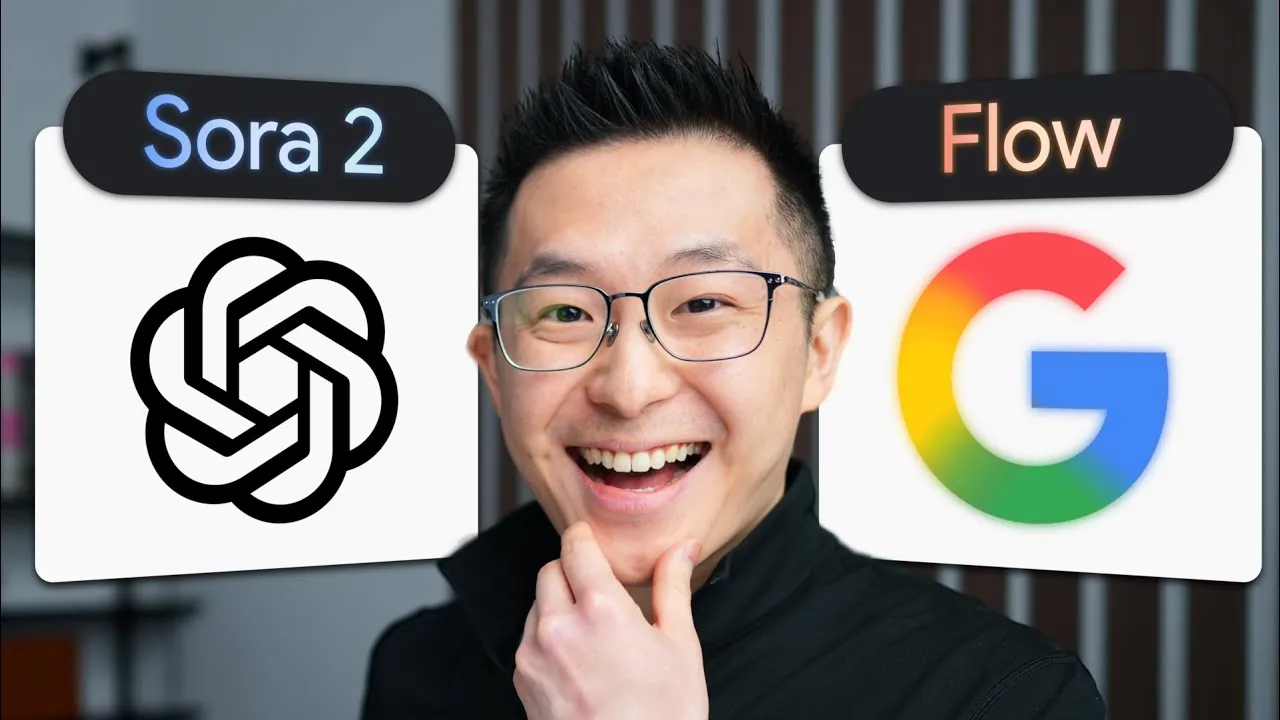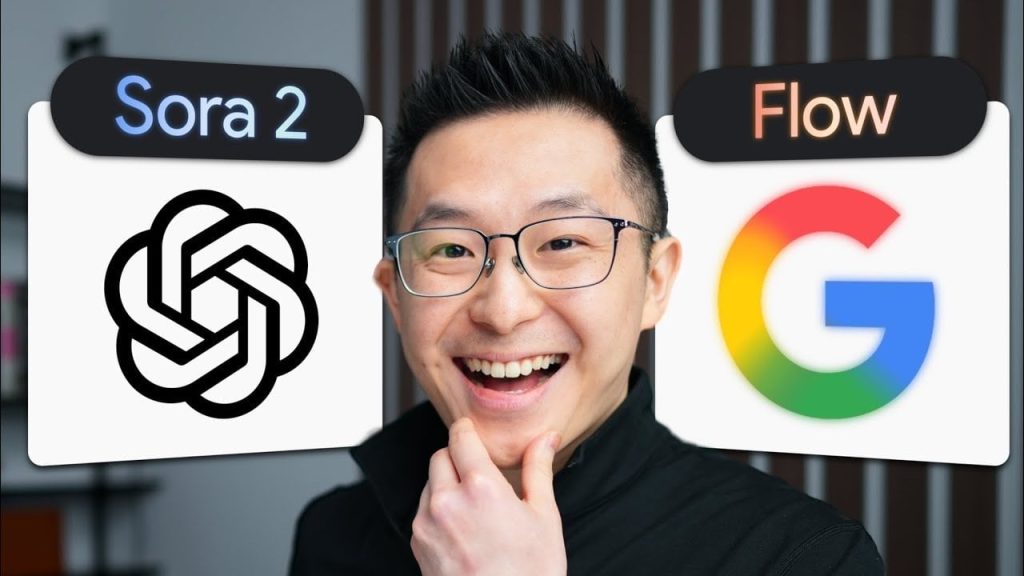
What if the AI-driven video revolution you’ve been imagining for 2025 isn’t quite the seamless, sci-fi dream you’ve been sold? Picture this: a world where AI tools can whip up stunning, hyper-realistic video clips in minutes, yet still falter when tasked with something as fundamental as keeping a character’s face consistent across scenes. Despite the dazzling progress in AI video generation, the reality is far messier, and far more human-dependent, than many expect. The promise of fully autonomous video creation remains tantalizingly out of reach, tangled in challenges like fragmented workflows, inconsistent narratives, and the need for painstaking manual intervention. The truth is, AI video in 2025 may be powerful, but it’s far from perfect.
In this perspective, Jeff Su peels back the glossy surface of AI video technology to explore both its new potential and its frustrating limitations. You’ll discover how tools like Google’s Flow app and 11 Labs are reshaping content creation for social media and advertising, while still struggling to meet the demands of professional filmmaking. We’ll also delve into the critical gaps, like the lack of memory and contextual awareness—that keep AI from mastering cohesive storytelling. Whether you’re a creator eager to embrace these tools or a skeptic questioning their hype, this exploration will challenge your assumptions and reveal why the future of AI video might be more complex, and more collaborative, than you think.
AI Video Creation Challenges
TL;DR Key Takeaways :
AI video tools excel at generating short, visually detailed clips, making them ideal for advertisements and social media but struggle with consistency in multi-scene projects.
Current AI models lack memory and contextual awareness, leading to inconsistencies in character appearances, settings, and audio across scenes, requiring significant manual intervention.
The typical AI video creation workflow involves multiple steps, including character creation, starting frames, video generation, audio synthesis, and final editing, highlighting the fragmented nature of the process.
Emerging tools like Sora 2 introduce features such as “Cameo” for character continuity and “Recut” for maintaining narrative flow, addressing some limitations but still requiring integration into broader workflows.
AI video technology shows promise but remains reliant on human expertise for complex projects, with future advancements needed in memory, consistency, and usability to achieve seamless, standalone solutions.
Where AI Video Stands Today
AI video tools have proven adept at generating short, visually detailed clips, making them ideal for applications such as advertisements, social media content, and simple animations. However, these tools struggle with maintaining consistency across multiple scenes, which is essential for creating cohesive narratives. For example, character appearances, settings, and even audio can vary significantly between scenes, disrupting the flow of the story and diminishing the overall quality of the video.
The root of this issue lies in the limitations of current AI models. These systems lack memory and contextual awareness, meaning they cannot retain or recall details from previous scenes. As a result, creators must rely on external tools and manual adjustments to ensure continuity, making the process fragmented and labor-intensive. This limitation underscores the gap between the capabilities of AI video tools and the demands of professional video production.
How AI Video Creation Works
Producing a cohesive AI-generated video involves a multi-step workflow that combines advanced technology with human expertise. Each stage of the process requires careful planning and precise execution to achieve professional results. Below is an overview of the typical workflow:
Character Creation: Tools like Whisk allow creators to design consistent character visuals by defining specific traits and styles. This step is crucial for maintaining uniformity in character appearances throughout the video.
Starting Frames: Initial still images for each scene are generated to establish the visual foundation. These frames must align with the narrative and serve as references for subsequent animation.
Video Generation: Starting frames are animated using tools such as Google’s Flow app. While these tools can transform static images into dynamic clips, the results often require further refinement to address inconsistencies.
Audio Consistency: Audio synthesis tools like 11 Labs are used to create uniform character voices. This step ensures that dialogue and narration remain consistent across scenes, enhancing the overall coherence of the video.
Final Editing: The video and audio are combined in editing software to refine the output. This stage involves correcting inconsistencies, adding transitions, and enhancing the overall quality of the video.
While this workflow can produce impressive results, it highlights the fragmented nature of current AI video tools. Each step relies on specialized software, and significant manual intervention is required to achieve a polished final product.
AI Generated Videos : What Creators Need to Know
Check out more relevant guides from our extensive collection on AI video generation that you might find useful.
Key Challenges and Limitations
Despite their potential, AI video tools face several critical challenges that limit their effectiveness for complex projects. These challenges include:
Lack of Memory: AI models are unable to retain information from previous scenes, leading to inconsistencies in character appearance, behavior, and settings. This limitation disrupts the narrative flow and requires manual corrections to address.
Audio Variability: Maintaining consistent voices across scenes remains a challenge, as AI tools often struggle to ensure uniformity in tone, pitch, and delivery. Manual adjustments are frequently needed to achieve professional-quality audio.
Manual Intervention: Even with advanced tools, creating polished videos demands significant technical expertise and time-consuming manual corrections. This reliance on human input limits the scalability and efficiency of AI video production.
These challenges highlight the need for more integrated solutions that address the shortcomings of individual tools while using their strengths.
Emerging Tools and Features
To address these limitations, developers are introducing new tools and features designed to improve the consistency and usability of AI video technology. One notable example is Sora 2, which offers two innovative features aimed at enhancing continuity:
Cameo: This feature uses recorded likenesses of real people and pets to ensure character continuity. By simplifying the process of maintaining visual consistency, Cameo reduces the need for manual adjustments.
Recut: By referencing the last few seconds of a previous clip, Recut helps maintain visual and narrative flow between scenes. This feature addresses one of the most significant challenges in AI video production.
While these advancements represent meaningful progress, they still require integration into broader workflows to deliver seamless results. Other tools, such as OpenArt, Hyalura, and Cling, focus on specific aspects of video creation, such as animation or visual effects. However, these tools remain limited in their ability to produce fully cohesive outputs without manual intervention.
Looking Ahead
AI video generation continues to evolve, offering creators powerful tools to enhance their workflows and expand their creative possibilities. However, these tools are not yet capable of serving as standalone solutions for complex, multi-scene projects. Producing high-quality videos still requires a structured approach that combines various technologies with human expertise.
The future of AI video lies in overcoming its current limitations, particularly in areas such as character consistency, memory, and usability. As the technology matures, it is likely to become a more integral part of the video production process, allowing creators to achieve greater efficiency and creativity. For now, AI video tools serve as valuable components within a larger creative framework, offering exciting opportunities while underscoring the importance of human oversight and ingenuity.
Media Credit: Jeff Su
Filed Under: AI, Top News
Latest Geeky Gadgets Deals
Disclosure: Some of our articles include affiliate links. If you buy something through one of these links, Geeky Gadgets may earn an affiliate commission. Learn about our Disclosure Policy.

